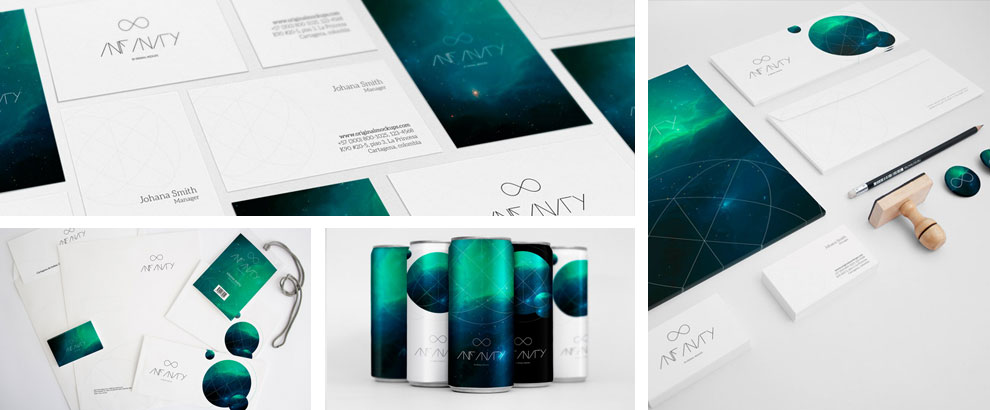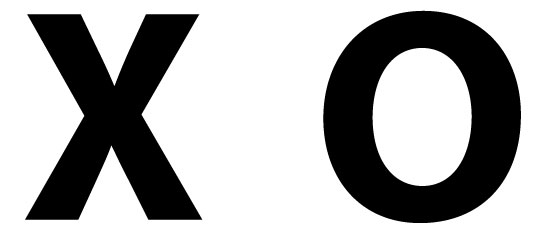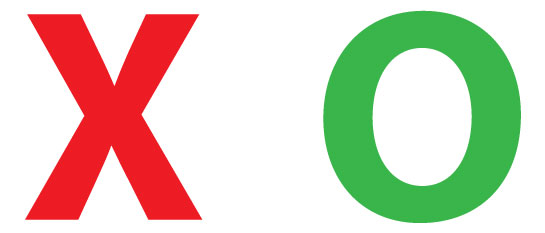


You might also like
Rebranding Strategy as a Catalyst: Turning Transition into Opportunity




Roman is an accomplished video production specialist with over 15 years of experience contributing to various corporate and commercial video projects. Throughout his career he successfully completed jobs for some of the world’s most recognized brands including Amazon, Nike, UCLA, Airbnb, HP, US Navy, and T-Mobile, with some videos reaching millions of online views.
Roman’s expertise covers every stage of production—from pre-production planning and professional on-set cinematography to post-production, including video editing and motion graphics design. His portfolio spans diverse video formats, from corporate training and recruitment films to commercial documentary, testimonials, and animated explainers, delivering high-quality visual storytelling that engages audiences and achieves business goals.

Mindy provides (W)right On client partners more than 10 years of experience in internal and external communications, media relations, content development, campaign and crisis leadership, fundraising support, social media, strategic planning and stakeholder engagement. She is a LEAD San Diego Impact Leadership Program Graduate; healthcare communications and marketing campaign platinum award winner from MAR-COM Awards; and recipient of a silver award for crisis and executive communications from the San Diego/Imperial County chapter of PRSA.
A native San Diego resident, Mindy holds a Bachelor of Arts degree in International Security and Conflict Resolution from San Diego State University.

Justin Beach brings over 25 years of expertise in web development, programming and technical support to his role at (W)right On Communications. As the agency’s Web Developer and Technical Resource, Justin ensures our client partners’ digital platforms are optimized for success and deliver seamless functionality and a compelling user experience.
Justin’s career spans leadership and entrepreneurial roles with experience building corporate websites, e-commerce platforms and electronic marketing campaigns for a diverse client base. His technical fluency extends across PHP, ASP, MySQL, CSS, JS and multiple database architectures.
Previously, Justin supported strategic SEO campaigns at Myers Media Group, creating platforms responsible for deploying over a million search-optimized web pages. He also led the development of an online shopping platform for Kodak subsidiary ENCAD, Inc., driving e-commerce growth through sophisticated web solutions and marketing integrations.
From guiding print marketing clients into the digital age to deploying hundreds of websites across various frameworks, Justin’s ability to blend design and technical expertise has benefited industries ranging from finance and bioscience to wellness and nonprofit organizations.
At (W)right On Communications, Justin’s creative problem-solving, deep technical know-how and passion for excellence power our clients’ digital strategies, elevating their brands in the digital space.

Claudia Askew, APR is based in Washington, D.C. and draws on her 30 years of experience in strategic communications to serve client partners in the energy, cleantech and B2B sectors. She led marketing and PR planning for the NeighborWorks America program for eight years helping low-income residents in all 50 states access down payment assistance through the Neighborhood LIFT program. She has a long history of volunteerism helping underserved youth and low-income women, and holds a Bachelor of Arts in Speech Communication from Wake Forest University and her Accredited in PR (APR) designation from the Public Relations Society of America.

Marsha Kelly has dedicated her career to assisting American Indian tribal communities and businesses with strategies to diversify their economies through wind farms, solar arrays, EV charging infrastructure and other initiatives. Her tribal relationships include the Mesa Grande Band of Mission Indians and the Minnesota Indian Gaming Association with consulting to other tribes across California, Michigan, New Mexico, North and South Dakota and Wisconsin. She holds a Bachelor of Science in English and Communications from the University of Minnesota.

Tatiana Martinez leads Spanish-language media outreach and community relations efforts for the agency and its client partners. She acts as a spokesperson for Spanish-language media and business or community group outreach. Tatiana has provided translations, Spanish voiceovers and strategies for reaching Spanish-speaking stakeholders. A former journalist for Mexican and American media outlets, Tatiana has a journalism degree from the University of Arizona and communications degree from Mexico’s Universidad Autonoma de Guadalajara.

Larry is a strategic communications and PR pro who brings more than 20 years’ in-house, agency and independent experience driving brand visibility, supporting sales growth, and establishing executives as thought leaders in the B2B and B2C spaces. He has a track record of building, leading, and excelling on cross-functional global teams for emerging and established brands including Sony, Dell, VMware, RSA, Xerox, Virgin Galactic, Underwriters Laboratories, Purfresh, Radiant Logic, Sumo Logic and more. He regularly serves as mentor to business and community organizations and has earned two PRSA Silver Anvil Awards for his work over the years.
Larry most recently served as Public Relations and Analyst Relations Lead at Sony Electronics, where he worked closely with Sony Electronics North America President & COO, and the global team. He holds a Master’s degree, is fluent in Japanese and Spanish, and lives in San Diego with his wife and their rescue Morkie, Cookie.

David brings more than 22 years of communication experience to (W)right On’s client partners, currently overseeing the agency’s hospitality, tourism, senior living, wellness and education practice areas. He has developed and successfully led strategic communications for numerous prominent brands including JP Morgan Chase, Oakmont Management Group, Aramark, San Diego Tourism Marketing District, SEGA, RISE Healthcare Group, Horizon Organic, Visit Napa Valley, Stanford Children’s Hospital, Orbitz, Best Western, Walmart and Velodyne Lidar.
He is a two-time winner of Bulldog Media’s Best Response to Breaking News Award and earned a bachelor degree in Mass Communication & Public Relations from Texas State University. David cemented his love for travel early on and has visited more than 45 countries on six continents; he’s also passionate about dogs and, in particular, his Chiweenie mix, Dora.

Andrea brings nine years of communications experience with a focus on the B2B & Tech sector, most recently in San Diego as a freelance communicator supporting numerous energy infrastructure projects with community outreach, corporate and sustainability communications and digital content creation. Prior to this, Andrea managed comprehensive internal and external communications at BKW Power Grid, Swiss Post and the State Executive Office in Switzerland.
She holds a Bachelor of Science in Business Administration and Master of Arts in Public Management and Policy plus Certificate of Advanced Studies from Zurich University of Applied Sciences; a Digital Marketing Certificate from New York’s Columbia Business School; and, most recently, completed the MITx Resolving Renewable Energy Siting Disputes course.
Andrea is bilingual in English and German, fluent in Spanish and proficient in French.

Responsible for communication programs research and analysis, Brian provides administrative and functional support to the agency’s program leads as well as senior management. With experience managing a retail store in the complex pool supply industry, Brian is a key contributor for social media programs, media relations, content development, vendor management, software programs oversight and other critical program aspects. He brings an innate sense of the agency’s GSD attitude to help ensure the agency remains at the industry forefront.
Brian holds a Bachelor of Economics degree from the University of Victoria in British Columbia, is an FAA-licensed Private Pilot, and is an accomplished musician and music producer in his spare time.

As Director of Research & Analytics based out of (W)right On’s Vancouver office, Hamish leads (W)right On’s survey and stakeholder information gathering initiatives North America-wide. A former advisor to the Prime Minister of Canada, Provincial Premiers, City Mayors and dozens of elected officials, he also served in the government of Canada overseeing the quantitative and qualitative research activities of federal government agencies. With experience using every sort of data collection method to provide critical insights for strategic planning, marketing and other organizational activities, Hamish has worked with dozens of private and public sector client partners, including the world’s largest mining company. In 2004 he worked in radio business development in Kabul, Afghanistan, and he has volunteered in democracy-building activities in Bangladesh and Jordan. Today, Hamish is frequently sought out by the media as an expert commentator for national television, radio and print publications. Prior to joining (W)right On, Hamish worked as the Research Director for Angus Reid Public Opinion, conducting and performing analysis on surveys in the United States, Canada and the United Kingdom.
He holds a Master of Business Administration degree from the University of Oxford in England, a Bachelor of Arts (Honors) degree from the University of Toronto and enjoys history, writing and sailing.

Formerly with VisitBritain and Showtime Networks, Katrina Early provides (W)right On client partners’ integrated and creative partnerships with film and TV studios, retailers, and media outlets such as Sony Pictures, Universal, Warner Brothers, The Ellen DeGeneres Show and Entertainment Tonight to name a few. Experienced in the hospitality, travel, entertainment industries among others, Katrina coordinates all aspects of B2B industry events, as well as grows client partners’ audience social media engagement through highly sharable digital content. Results achieved include positive media placement in top tier outlets including National Geographic, Robb Report, Forbes, USA Today, LA Times, NBC/Today Show, E! News, Extra, The Tonight Show, People and many others.
Katrina holds a Bachelor of Arts in Journalism & Public Relations from CSU Long Beach and a Master of Arts in Communications from the prestigious University of Southern California Annenberg School of Communication.

Phelan Riessen is a passionate web and graphic design artist with over 25 years of experience designing and building more than 60 websites for a variety of organizations. Skilled in fontography, web design, Photoshop and web marketing strategies; Phelan also holds a strong presence in the San Diego tech community by serving as an organizer of several large-scale events including RefreshSD, March Mingle and Startup Week.

With a proven track record of success and more than 10 years of design and marketing experience, Danielle optimizes design workflows to ensure consistent brand identity while overseeing a wide range of creative services from concept development, through to delivery of final designs and artwork. Prior to joining the (W)right On Communications team, Danielle worked for various creative agencies and on a wide range of freelance projects for clients in the U.K. and European Union. Most recently, she oversaw creative localization for Dyson’s Central European and Emerging Markets.
Danielle’s capabilities include content creation, marketing pieces, animations, websites, print collateral, motion graphics and more, all with a strong foundation in visual storytelling.
Danielle holds a Bachelor of Fine Arts in Visual Arts & Graphic Design degree from Barbados Community College, a Master of Science in International Creative Advertising degree from Manchester Metropolitan University, and embraces emerging technologies in the creative services field.
Danielle has lived and worked in the Caribbean, U.K., and Austria and loves living in San Diego and exploring Southern California with her husband.

Grant Wright has more than 30 years of senior management experience including external affairs and business development leadership roles for major American and Canadian corporations and their subsidiaries. With extensive skills in all aspects of communications including media, regulatory, governmental, community outreach and labor relations; he has also led major infrastructure project development, M&A due diligence and implementation management, marketing and brand development, strategic planning and business plan development for small through Fortune 500 companies.
As CEO and Managing Partner, Grant provides oversight and senior-level communications and business counsel for the agency’s client partners while also overseeing agency management and administration.
Grant holds a Bachelor of Science degree in Biology and an MBA in Marketing and Finance. Professionally, he is formerly a Board Director of the San Diego Venture Group (now Connect San Diego – the region’s venture capital ecosystem). Grant is a two-time Finalist for the San Diego Business Journal’s Most Admired CEO Awards, and currently is in his second year as Chair of the North American chapter of the International PR Network (IPRN) based in Brussels, Belgium. He is also one of five board directors chosen by its worldwide membership for a second year to lead IPRN globally. A resident of and advocate for San Diego, and with (W)right On being a prominent tenant in San Diego’s iconic Emerald Plaza, Grant also serves on the board of directors of the Downtown San Diego Partnership.
During his free time, Grant enjoys scuba diving, hiking and family time. He is also a commercial pilot licensed in both Canada and the U.S. and is the founding board chairman of the Southern California Aviation Association that has provided more than $500,000 in student scholarship grants since the organization’s inception.

Julie Wright is President of (W)right On Communications, Inc., the award-winning integrated strategic communications firm she founded in 1998. With offices in San Diego, Los Angeles and Vancouver, B.C., her team handles complex communications challenges for B2B tech, cleantech and energy, healthcare, tourism and hospitality, not-for-profit and public sector organizations. Wright and her team elevate the agency experience through data-driven insights and measurable results for client partners.
Earlier in her career, Wright served at several public relations agencies and in-house as Director of Marketing for a financial institution. She began her career as a journalist, working as a radio news anchor.
Wright currently serves as a director and past chair of the San Diego North Economic Development Council and a director of CalTravel. Her previous community service has included director of the Los Angeles chapter of the International Association of Business Communicators, board vice president of the La Jolla Village Merchants Association, trustee for the Tri-City Hospital Foundation and chair of the President’s Advisory Council for California State University San Marcos.
Wright was named a “Woman Who Means Business” by the San Diego Business Journal and a “40 Under 40” honoree by the San Diego Metropolitan magazine. She was also recognized with the annual Fran Aleshire Award for community leadership by Leadership North County and founded the LNC Alumni group, which is now 400 strong. Julie was named IABC San Diego’s Communicator of the Year in 2025.
Wright holds a Bachelor of Arts degree from the University of B.C. and a Master of Journalism degree from the Graduate School of Journalism at the University of Western Ontario. She is a graduate of the Leadership North County program as well as the Corporate Directors Forum Governance Academy.
She lives in San Diego with her husband, has two sons in college, loves being outdoors in Southern California and Vancouver, and has a passion for elephants, frogs and Champagne.